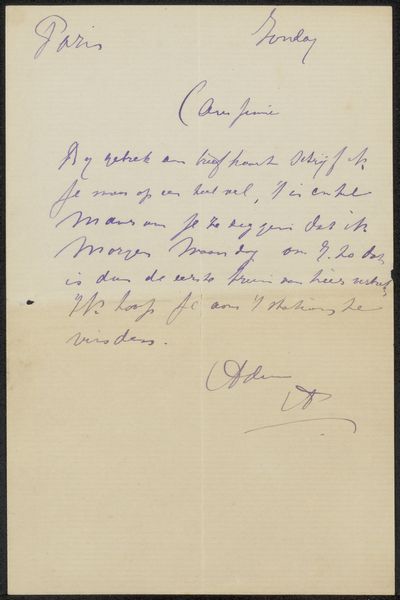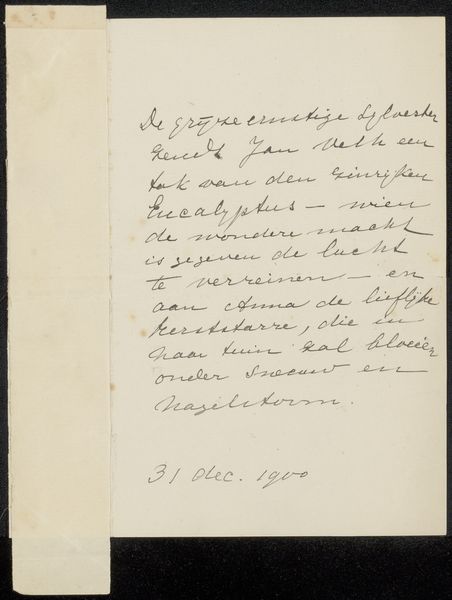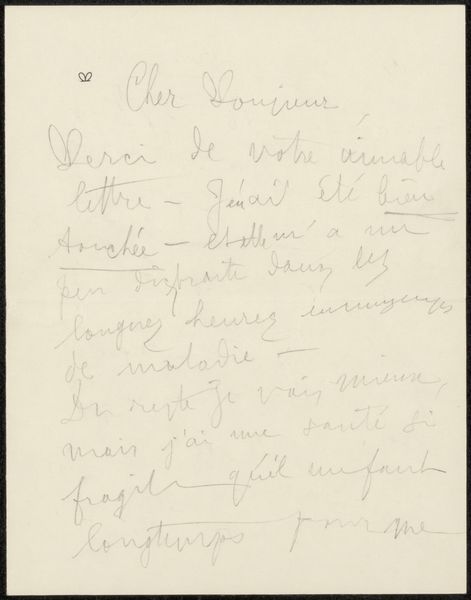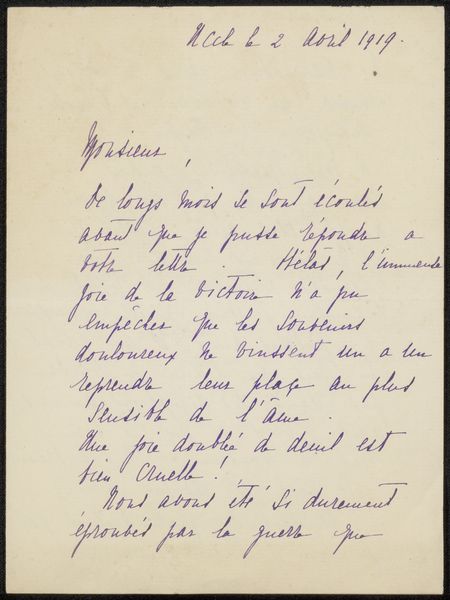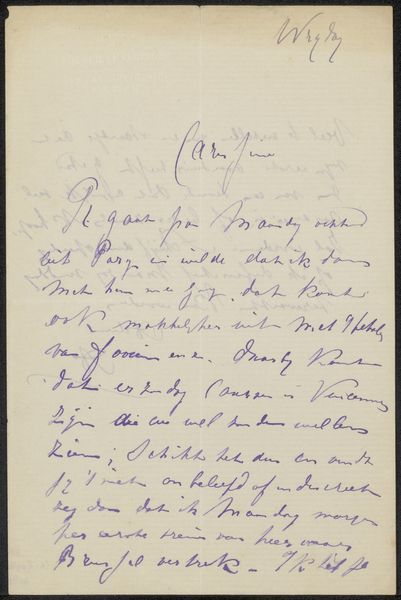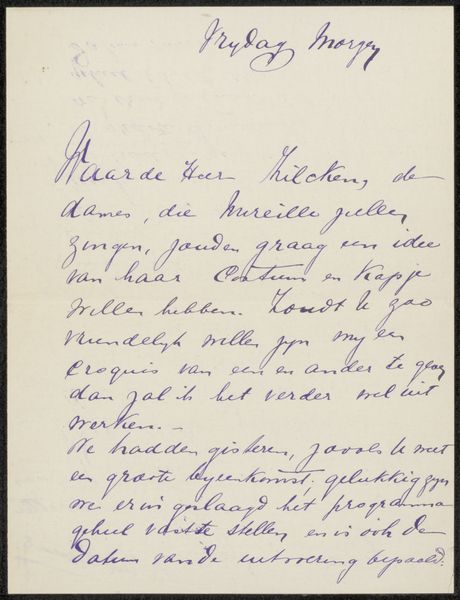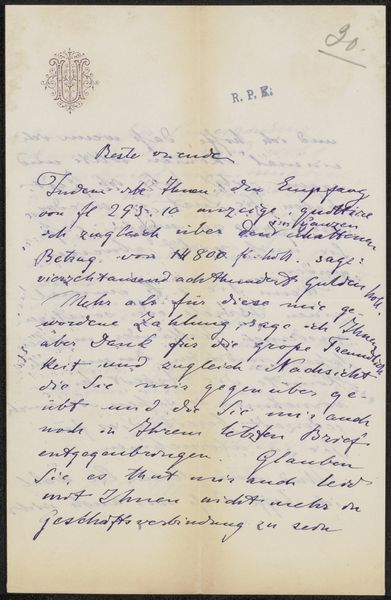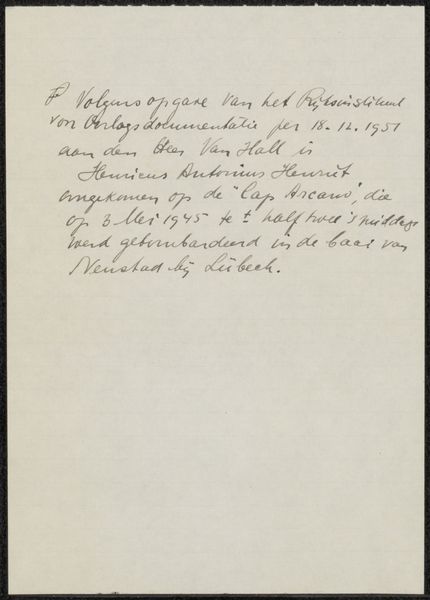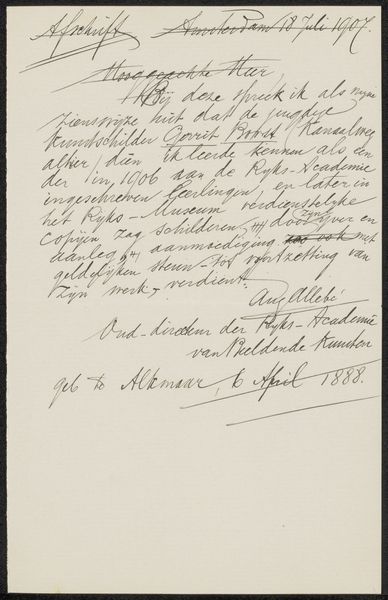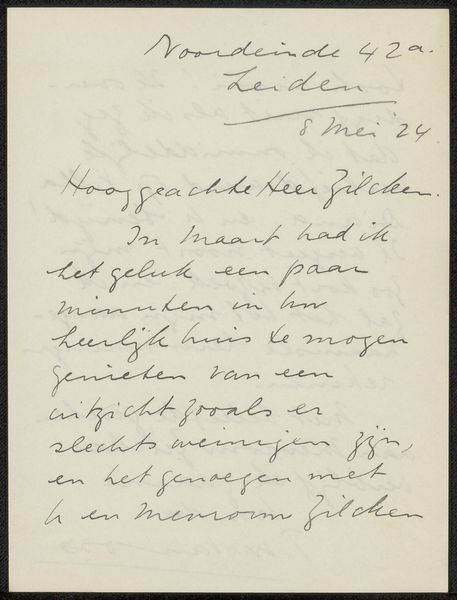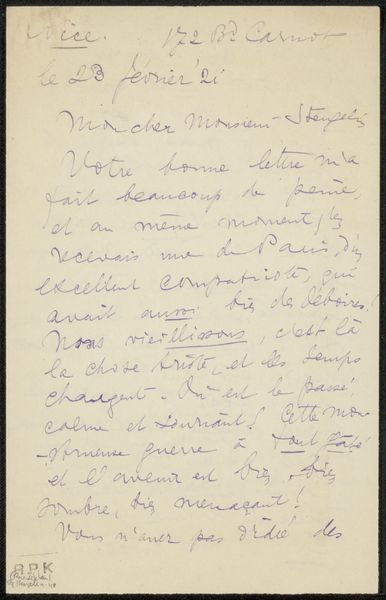
drawing, paper, ink
#
drawing
#
paper
#
ink
Copyright: Rijks Museum: Open Domain
Curator: Let's explore this intriguing letter held here at the Rijksmuseum, "Brief aan Philip Zilcken," by Maurits van der Valk, likely dating from the 1890s. It’s executed in ink on paper, a private correspondence turned public artifact. Editor: My first impression is a sense of intimacy, a peek into a direct communication. The script, the slight yellowing of the paper, everything conveys a personal touch, yet the very materials suggest a wider access. Curator: Exactly. The act of writing, then as now, represents an intentional engagement with communication norms. The price per piece mentioned suggests it may concern commerce around art production, but personal sentiments clearly weave through it as well, complicating the commercial element. Editor: I agree, but notice the materiality of the writing implement. What kind of nib was used, and where was the paper sourced? Did such a personalized missive necessitate expensive stationery, and if so, who typically purchased items like that? These choices impact the accessibility of correspondence as a medium. Curator: Certainly. The quality of the paper, if it were of higher quality, could subtly indicate Van der Valk’s societal positioning and standing among his peers and patrons, shaping expectations of both his private character and professional practice. We are in essence interpreting not just text, but the tactile signs of class. Editor: And consider the act of handwriting itself. It’s a skill that connects the author physically to the page and requires the direct application of labor. Now this is something increasingly antiquated. Today’s correspondence via digital spaces lacks that laborious, tangible quality. The choice alone marks an economic bracket of its day. Curator: It all hinges on the interpretation of those traces. Ultimately, the letter becomes less about the specific message and more about the broader socio-cultural framework surrounding its creation. The medium and materiality thus informs the message beyond Van der Valk's intentions. Editor: Indeed. A mundane personal letter today becomes a window into artistic practice, market forces, and shifting access. Curator: The layers of context allow for a deeper appreciation of the history, revealing much about art world relationships. Editor: Agreed. Understanding this adds profound weight to our appreciation.
Comments
No comments
Be the first to comment and join the conversation on the ultimate creative platform.
